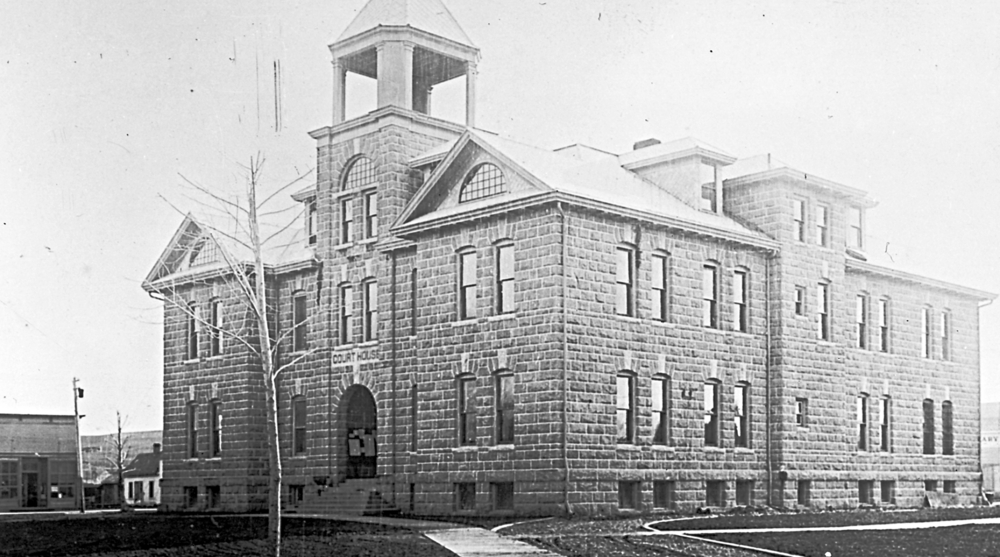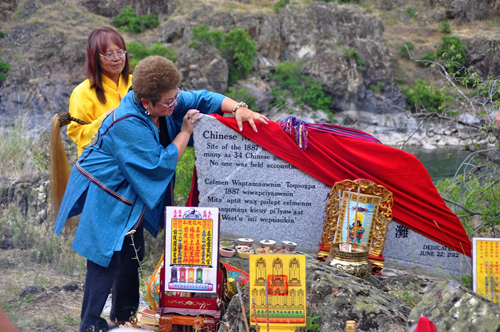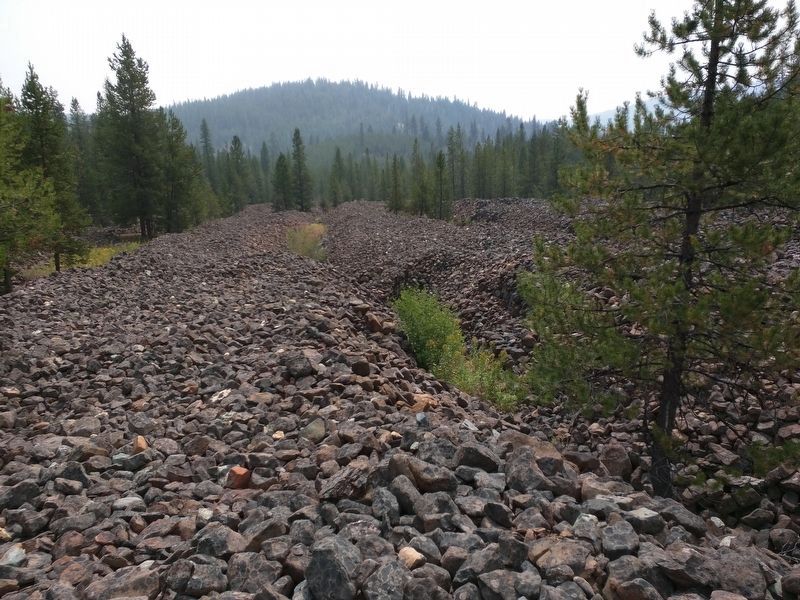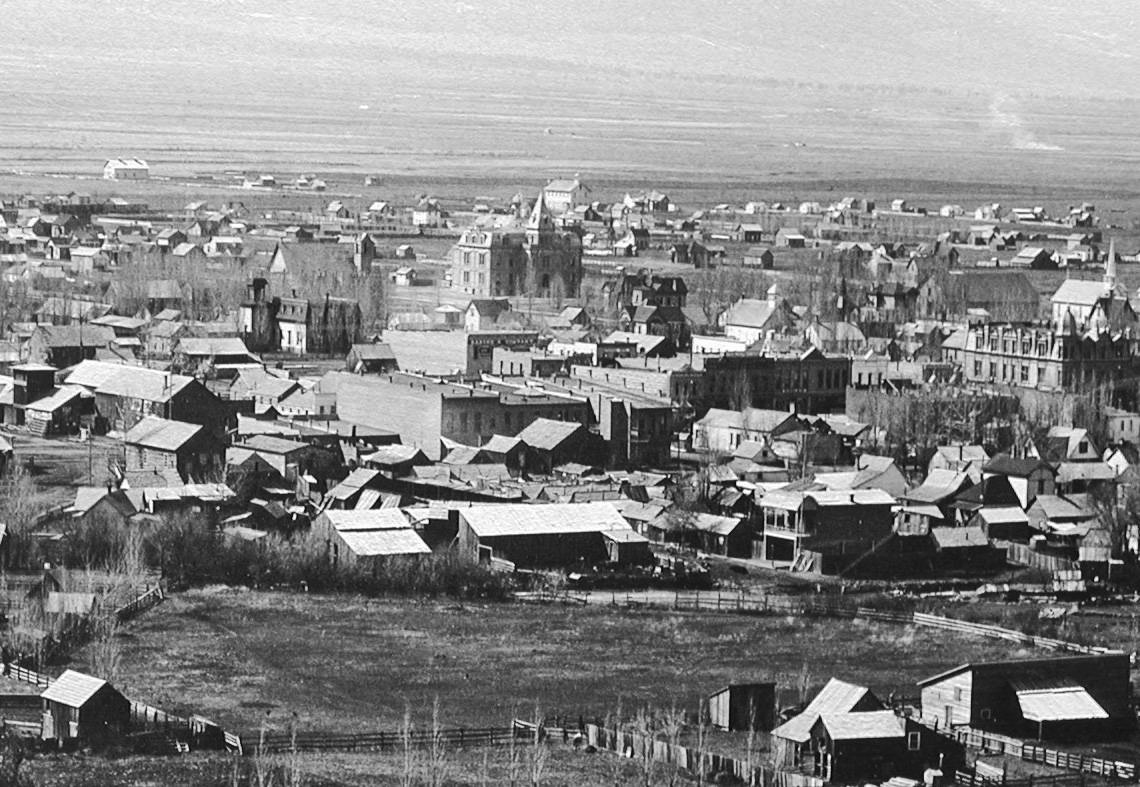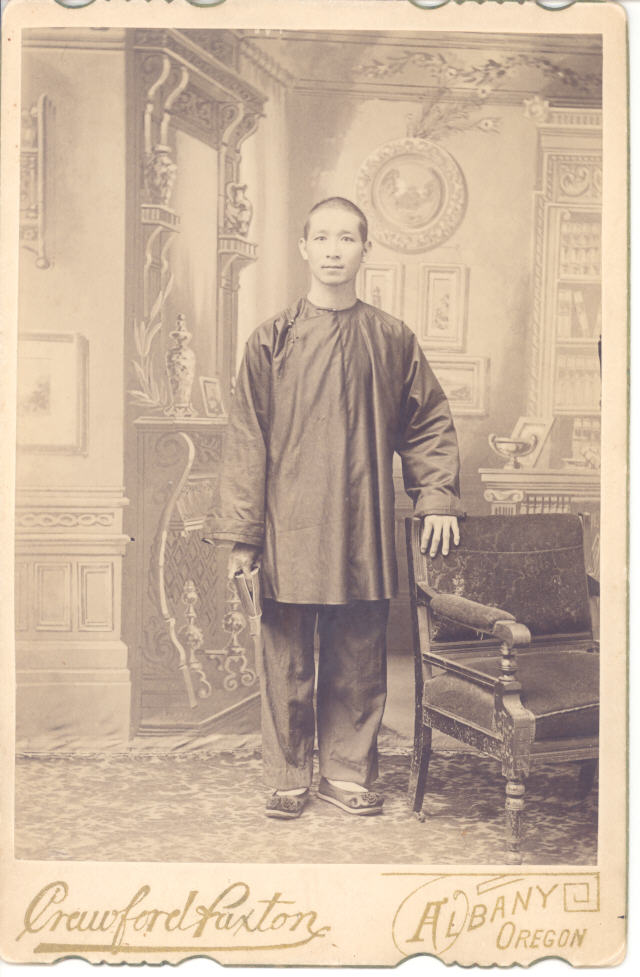Of the many crimes and injustices committed against early Chinese immigrants in the American West, what may have been the most brutal occurred at Deep Creek on the Oregon side of the Snake River in Hells Canyon. In May 1887, at what is now known as Chinese Massacre Cove, as many as thirty-four Chinese gold miners were ambushed and murdered by a gang of horse thieves and schoolboys from Wallowa County.
The crime was discovered when some of the bodies, thrown by the killers into the Snake River, were spotted near Lewiston, Idaho Territory, sixty-five miles to the north. News accounts reported that the bodies showed evidence of torture. The first accounts of the killings at Deep Creek reported that ten men had been murdered. While the focus intially was on this number, early news accounts suggested the number of victims was much higher.
The Sam Yup Company of San Francisco, employer of the Chinese miners, directed Lee Loi, who may have lived near where the bodies were found, to pursue the matter. Lee hired Lewiston judge Joseph K. Vincent to investigate the murders. Vincent reported his findings substantiating the basic details of the crime to the Chinese consulate in San Francisco, which unsuccessfully sought help from the U.S. State Department.
In March of 1888, one of the gang of killers, Frank Vaughan, confessed and turned state's evidence against the others.
A grand jury in 1888 indicted six men and boys, all residents of Wallowa County, for murder. Three men, including the presumed leaders of the gang, fled and were never caught — some accounts from early settlers suggested the leaders took some of the gold with them, and buried the rest, but no one can be certain. Three others were declared innocent by a jury on September 1, 1888, following a two-day trial in Enterprise, Oregon. No one was punished for the crime.
In 1891, the father of another of the accused killers, Robert McMillan (only fifteen at the time of the massacre), quoted his son as confessing that the gang had killed thirty-four Chinese before fleeing with a large quantity of gold. Credible accounts written separately by two early Wallowa County settlers put the number of dead at between thirty-one and thirty-four.
Nothing is known about the Chinese victims of the massacre at Deep Creek beyond some names and their home district in Canton (now Guangzhou), Kwangtung Province (now Guangdong). They would have been among the tens of thousands of Chinese laborers who crossed the Pacific in the late nineteenth century in search of work and gold in what they called Gum Shan, or Gold Mountain. The 1880 Census put the nation's Chinese population at 105,465, of whom 9,540 were in Oregon.
Over the years, the massacre was largely forgotten. Then, in 1995, a Wallowa County clerk uncovered a collection of misplaced—or, perhaps, hidden— court documents in an unused county safe, shedding new light on the crime. The documents included a copy of the 1888 grand jury indictment; details of an escape from jail by the leader of the gang, Bruce Evans; a lengthy deposition by Frank Vaughan giving his version of how the murders occurred, and notes from the trial itself. Although the Vaughan deposition was self-serving —he pinned all the blame on Evans and the two others who fled prosecuton—he acknowledged witnessing the shooting and provided additional important detail on what actually happened.
In 2005, the U.S. Board on Geographic Names approved giving the name Chinese Massacre Cove to the Deep Creek massacre site, the first official recognition of the crime. In June of 2012, a memorial to honor the slain Chinese miners was installed at the site of the massacre overlooking the Snake River. The memorial was financed entirely with private contributions and is inscribed in three languages: English, Chinese and Nez Perce.
-
![Memorial]()
Memorial.
Memorial Courtesy Candise Nokes
-
![]()
Deep Creek where the Chinese Massacre occurred.
Courtesy of Greg Nokes
-
The Wallowa County Courthouse.
The Wallow County Courthouse where two men and one boy, accused of murdering Chinese miners, were tried. Oregon Historical Society Research Library bb003003
-
![Bettie Luke of Seattle unveils the memorial at a dedication on June 22, 2012.]()
Bettie Luke of Seattle unveils the memorial at a dedication on June 22, 2012..
Bettie Luke of Seattle unveils the memorial at a dedication on June 22, 2012. Courtesy Deston Nokes
Related Entries
-
![Ah Hee Diggings (Chinese Walls)]()
Ah Hee Diggings (Chinese Walls)
The Ah Hee Diggings, also called the Chinese Walls, are sixty acres of …
-
![Baker City Chinatown]()
Baker City Chinatown
For over seven decades, Baker City had an area referred to as Chinatown…
-
![Chinese Americans in Oregon]()
Chinese Americans in Oregon
The Pioneer Period, 1850-1860 The Cantonese-Chinese were the first Chi…
-
![Chinese mining in Oregon]()
Chinese mining in Oregon
The city of Guangzhou (formerly known to Westerners as Canton) is the c…
-
![Expulsion of Chinese from Oregon City, 1886]()
Expulsion of Chinese from Oregon City, 1886
On February 22, 1886, approximately forty men gathered in Oregon City a…
Related Historical Records
Map This on the Oregon History WayFinder
The Oregon History Wayfinder is an interactive map that identifies significant places, people, and events in Oregon history.
Further Reading
Nokes, R. Gregory. Massacred for Gold: The Chinese in Hells Canyon. Corvallis: Oregon State University Press, 2009.
Nokes, R. Gregory. "Volunteers Clear Trail to Massacre Site." Histories of the Early West, March 22, 2013. http://gregnokes.com/2018/03/22/volunteers-clear-trail-massacre-site/
Chinn, Thomas W., H. Mark Lai, Philip P. Choy. A History of the Chinese in California, A Syllabus. San Francisco: Chinese Historical Society of America, 1969.
Nokes, R. Gregory, "A Most Daring Outrage,'' Murders at Chinese Massacre Cove, 1887," Oregon Historical Society Quarterly 107.3 (2006): 326-353.
Tsai, Shih-shan Henry, The Chinese Experience in America. Bloomington and Indianapolis: Indiana University Press, 1986.
Yung, Judy, Gordon H. Chang, Him Mark Lai. Chinese American Voices, From the Gold Rush to the Present. Berkeley: University of California, 2006.



